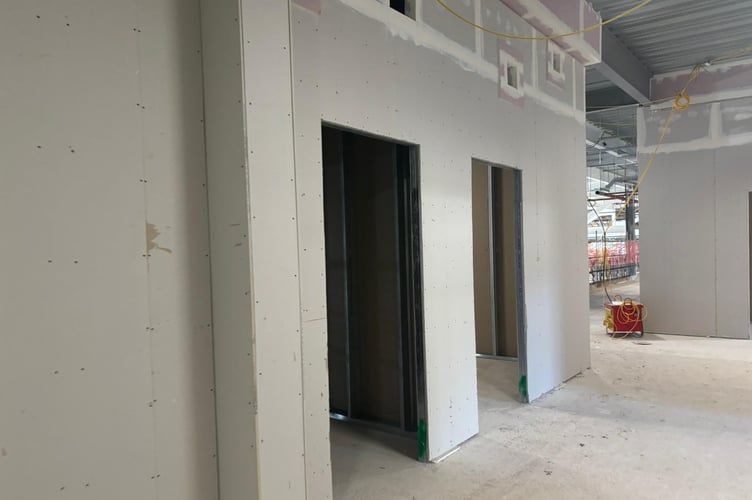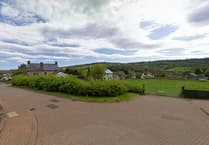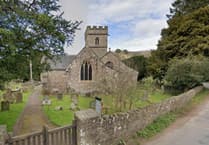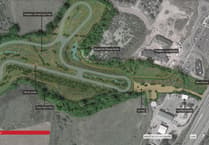With the new King Henry VIII 3-19 school building due to open later this year, The Chronicle was given the opportunity to witness the progress and vision of the facilities that are to be enjoyed by both students and members of the community.
The project is being delivered through The Sustainable Communities for Learning Programme, which the Welsh Government delivers in partnership with local authorities. The Sustainable Communities for Learning Programme is a long-term infrastructure investment in schools and colleges in Wales.
The project aims to improve the quality of school buildings, ensure places are available to serve local pupil demand, reduce surplus places, reduce running costs, and promote sustainability.
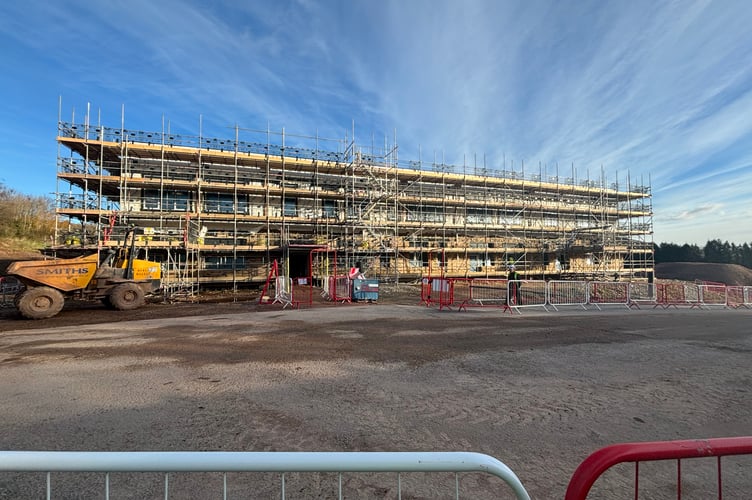
Headmaster, Jonathan Watson, came along for the tour; offering insight into the decisions behind each department and facility which he hopes with provide ‘an excellent education for all pupils in this wonderful community, in this fabulous town’.
“For our pupils to progress rapidly and achieve academic excellence in an environment of love and care. We want to be a strong family where expectations are high, values are positive, and children are treasured.
“We also want to equip our pupils with the knowledge, character, and learning power to achieve top grades in their qualifications and lead successful lives. And above all, ensure that every lesson counts, every pupil matters and feels valued. Utilising all the great benefits of pupils attending an all-age school.”
One way in which the building hopes to achieve this, is through its open and airy environment. Something that occurred to me as I walked around each classroom was how large and light they were; with incredible views of the town on full display.
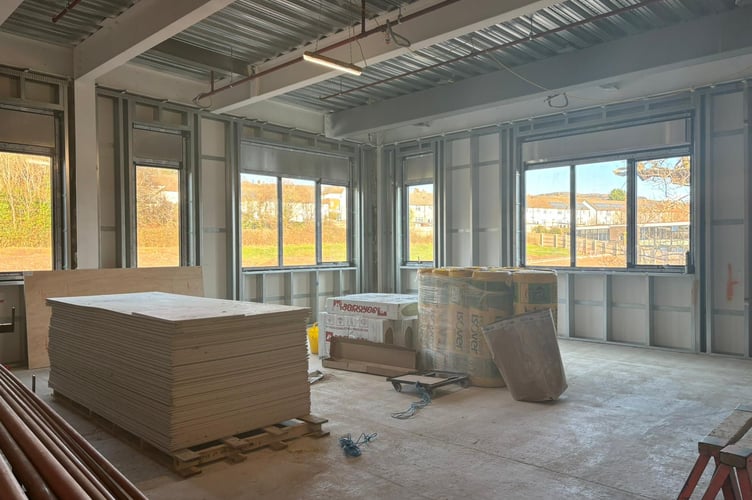
“We hope that each student is struck by inspiration as soon as they walk into a room,” Mr Watson said, enthusiastically. “We do not want them to feel confined to a space. The idea is that they feel like they have endless room for ideas – that they feel inspired by their surroundings and that the sky’s the limit.”
The aim to inspire students is demonstrated in various learning courtyards and staircases that are found throughout the building and outside. These features give both students and staff members the opportunity to venture out of the classroom, into a new space; perhaps sparking a new lease of life or creativity.
Learning outdoors also fits in with the biophilic design of the school; as the school is proud to be the first net zero carbon all-age school in Wales. Additionally, there has been a clear effort to aid the experience of staff members. Teachers have periodically visited the site to see the progress of their department block and share opinions on how to use the space. An example of this is the L-shaped format of science rooms, which is done to support laboratory work.
The Modern Languages Department (as shown below) has also been specially designed, with an open area outside of the classrooms for pupils and teachers to converse and practice their linguistic skills without feeling like they are in a classroom setting.
“The design process has been very much influenced by both staff and pupils. The student voice was extremely important, through school council meetings. We wanted a building that everyone is proud of and can fully excel within.”
Mr Watson went onto explain how such a positive environment can be a great catalyst for learning. “We have high expectations of behaviour to ensure a calm, safe and lovely sparkly learning environment. We support this with our belief in the unlimited power of warm relationships between staff and pupils. Our new school’s goal is to always be relentlessly positive.
“I really care about our children. We are a values-based school and we explicitly teach our pupils to live by our values, embrace them and hold them deep in their hearts. Values are the driving force of the school.
“Our values were co-constructed. Families, pupils, and staff were all involved in designing our values. They include courage, curiosity, determination, positivity, kindness, appreciation, and harmony.”
At the heart of the school is the dining and social space; where students can integrate. A large presentation staircase separates the Sixth Form Cafe from the main canteen; giving older students an area to socialise without being completely divided from the rest of the school community.
Above, you can see the presentation staircase that leads from the main dining area to the Sixth Form Social Cafe, which is parallel to the dance studios. The Social Cafe offers an incredible view of the Blorenge.
Moreover, the social cafe is a stone’s throw away from the library area – allowing students to escape into a quiet study space.
The library is a particularly important part of the school, as Mr Watson hopes to put an emphasis on the importance on reading.
“We place a large emphasis on reading due to the significant positive impacts it has on all our lives. Children who read the most achieve the most. The impact of reading on educational outcomes is huge.
“We regularly turn our year groups into giant book clubs. This includes teachers regularly reading to pupils. It is lovely to be read to and to be engaged in a story. It is lovely when adults read to the pupils. It helps build our sense of belonging and community.
“We regularly drop everything and read all our pupils and staff do this. We have a robust phonics and reading teaching programme for younger pupils. Reading is everywhere.”
To further spur creativity and broaden ways of thinking, students only have to look through the window in the library – where a spectacular tree stands. The tree has been a part of the town for generations and stands as an important symbol for the school; representing growth and community.
Beyond the education, extra curriculars is a vital aspect to the school.
“Pupils must feel they belong to their school – schools cannot succeed without this. This is why we do so much beyond the curriculum,” Mr Watson said.
Indeed, the high quality facilities will only work to further students ventures into fields beyond education.
“There are so many extra-curricular clubs so that pupils can become interested in new things.
“Just this year so far, we have had multi-sports, rugby, chess, volleyball, singing, percussion, Spanish, digital drawing, football, home-learning, orchestra, netball, film club, squash, drama, dance, choir, cross country, badminton.
“Our pupils also complete their Duke of Edinburgh awards at bronze, silver and gold levels – so important for their development.
“We don’t use mobile phones in school. This is because pupils’ long-term happiness and wellbeing is our most important priority. Smartphones are addictive, controlling and children can easily be disturbed and monopolised by them.
“Instead, we provide wonderful clubs and extra curricular activities for pupils to get involved in and become excited by.
“We also have a hugely successful house system where classes take part in friendly competition in a range of activities. Inter-house competitions include rugby, football, netball and hockey fixtures.
“The numerous sporting facilities will benefit our pupils and community so much. The impressive sports hall, dance studio, grass pitches and 3G pitches... It is really inclusive, with something for everyone...
“But it’s most definitely not just sport. We have lots of other activities.”
The state of the art facilities only work to enhance student’s experiences in their chosen extra curricular activity; propelling them to better themselves or perhaps try something new.
For aspiring musicians, there are specially designed rooms that are sound-proofed so that each student is fully immersed and can go the extra mile in learning their respective instrument without fear of disturbing classmates.
In addition to this, budding bands and singers can have a taste of what a career in music could be like as there are also recording studios on offer. This only further exemplifies the idea that the sky is the limit in King Henry’s new facility - students are encouraged to go achieve their dreams.

